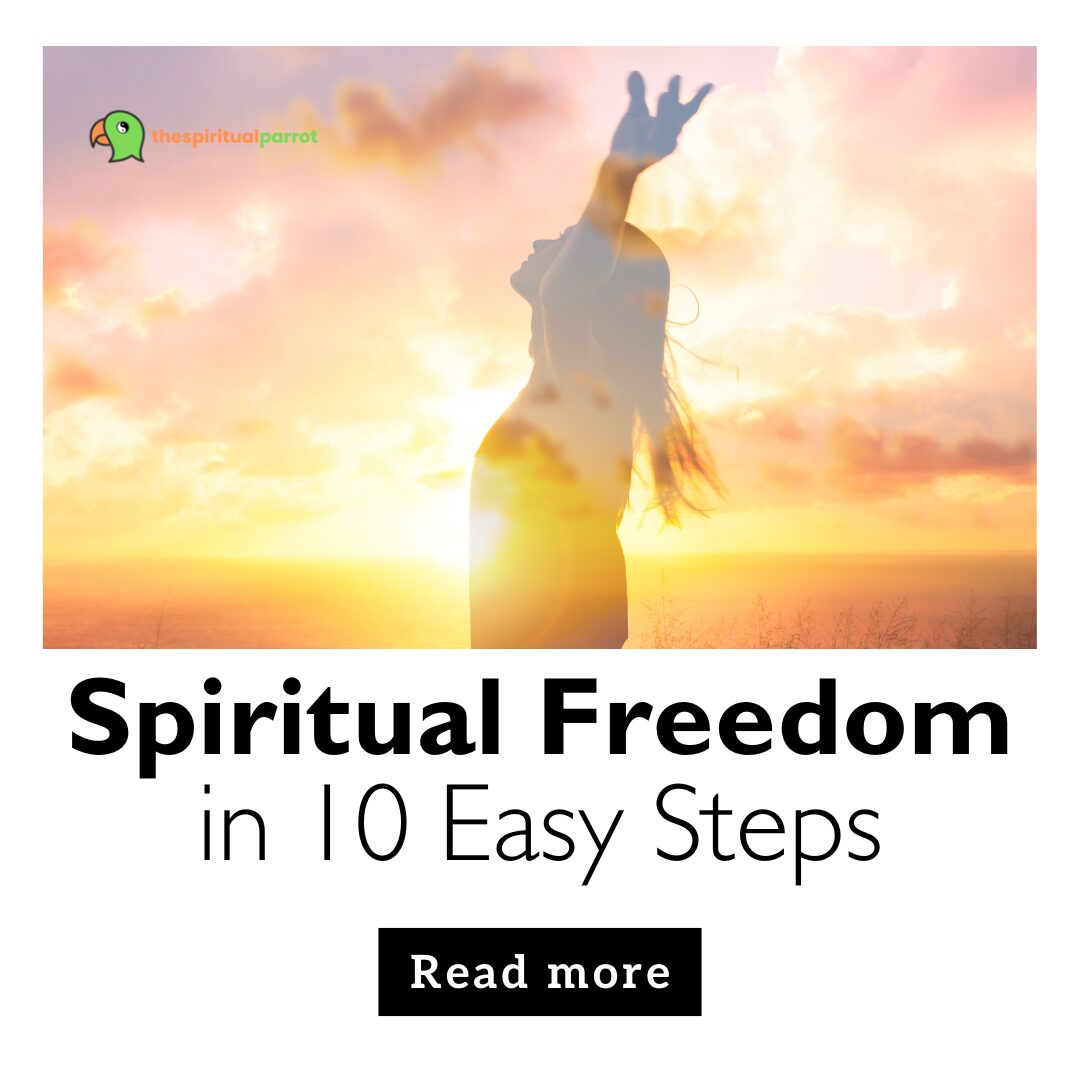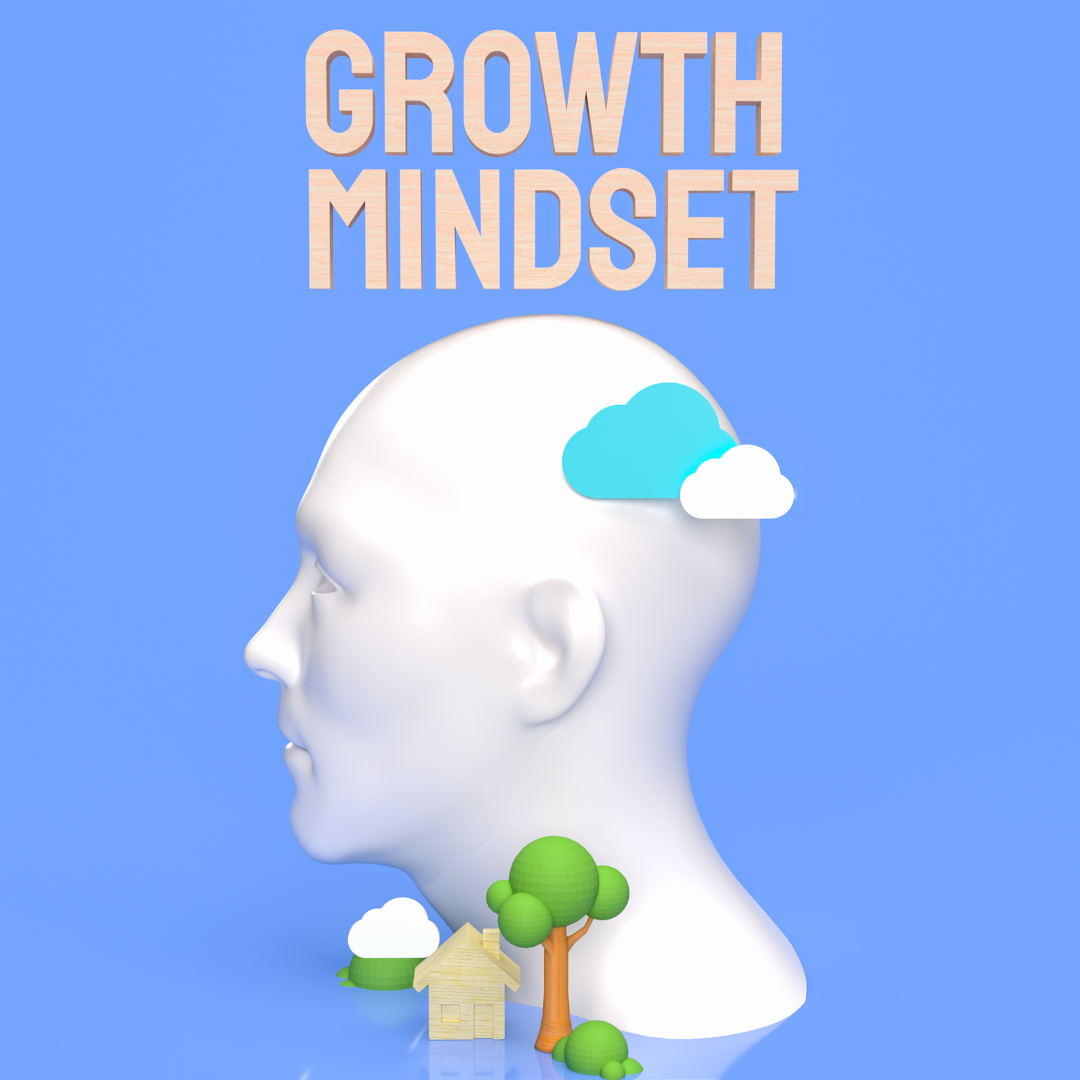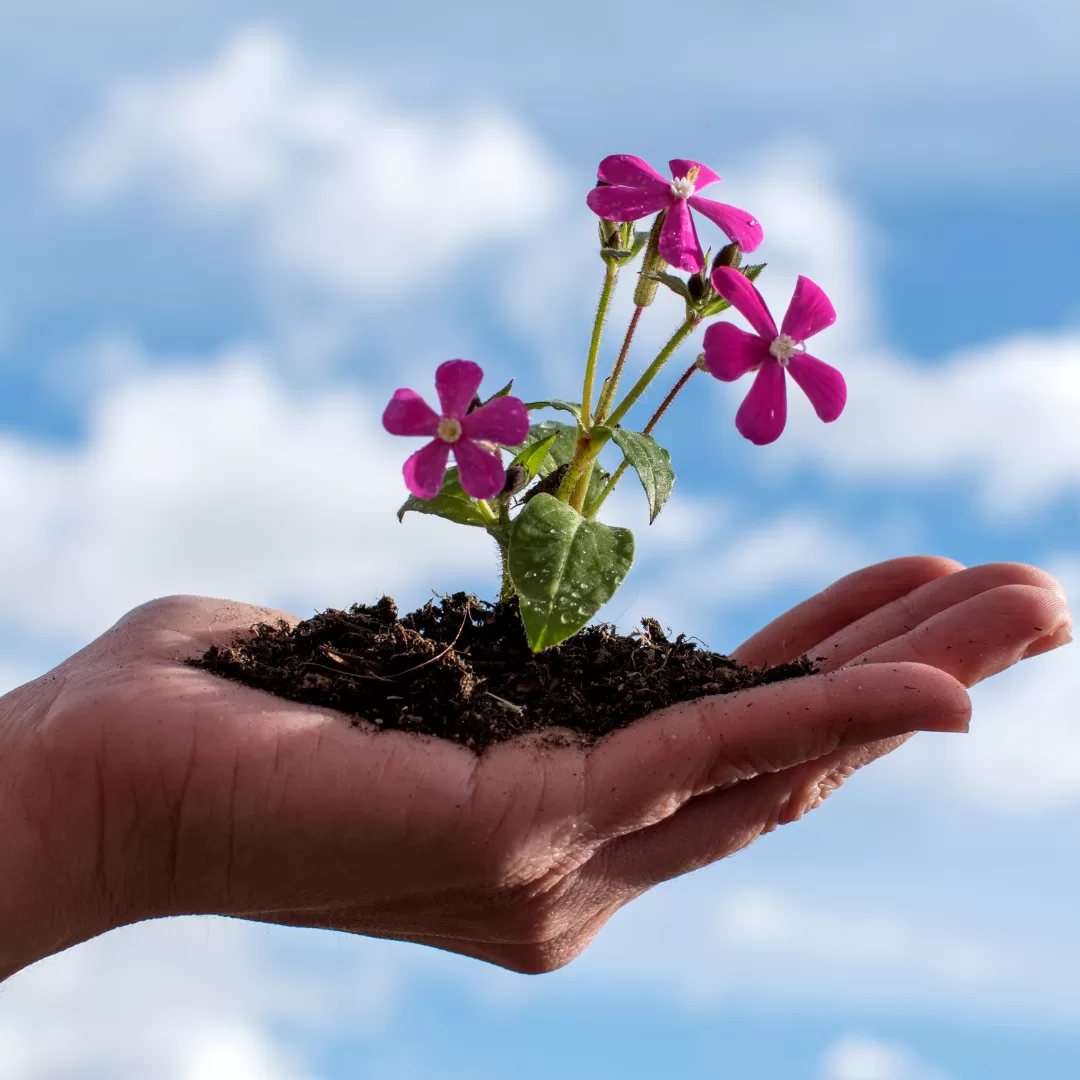Have you ever wondered what it truly means to be spiritually free? In our fast-paced world, the concept of spiritual freedom often gets overshadowed by daily stresses and routine obligations. However, understanding and embracing this freedom can be transformative, bringing peace and clarity to our lives.
What is Spiritual Freedom?
Spiritual freedom is more than a concept; it’s a profound experience. It’s about breaking free from the invisible chains that bind our thoughts and emotions, allowing us to live authentically and with purpose. This freedom is not just about religious beliefs; it’s about finding inner peace, understanding our true selves, and connecting deeply with the world around us.
- Self-Discovery: At the core of spiritual freedom is the journey of self-discovery. It’s about asking the big questions: Who am I? What is my purpose?
- Inner Peace: It’s also about cultivating a state of inner peace, where our minds are clear, and our hearts are open.
- Connection to Life: Embracing spiritual freedom means feeling deeply connected to life itself, and finding joy and wonder in everyday moments.
The Impact of Spiritual Freedom on Daily Life
Embracing spiritual freedom can revolutionize how we live our daily lives. Imagine waking up each morning feeling refreshed, grounded, and ready to face the world with a sense of purpose and calm.
- Improved Mental Health: By achieving spiritual freedom, we can significantly improve our mental health, reducing anxiety and stress.
- Enhanced Relationships: It also positively impacts our relationships, as we become more empathetic, understanding, and genuinely connected with others.
- A Sense of Fulfillment: Most importantly, spiritual freedom brings a sense of fulfillment and contentment, guiding us to live our lives to the fullest.

Step 1: Cultivate Self-Awareness
The first step towards achieving spiritual freedom is cultivating self-awareness. It’s about understanding who you are at your core, recognizing your values, beliefs, and what truly makes you tick. This journey starts with looking inward and asking yourself some honest questions.
Techniques for Enhancing Self-Awareness
Enhancing self-awareness is a practice, and like any skill, it gets better with time and effort. Here are some effective techniques:
- Journaling: Start by keeping a daily journal. Write about your thoughts, feelings, and experiences. This process helps in self-reflection and gaining deeper insights into your inner world.
- Mindful Practices: Incorporate mindfulness into your routine. Activities like mindful breathing, walking, or even eating can help you stay present and more aware of your thoughts and feelings.
The Role of Journaling and Mindfulness
Journaling and mindfulness are powerful tools in your quest for spiritual freedom. They work hand in hand to bring clarity and understanding to your inner self.
- Reflective Writing: Use your journal as a space for reflective writing. Ask yourself questions about your day, your reactions to certain situations, and how they align with your core values.
- Mindful Observations: Through mindfulness, learn to observe your thoughts without judgment. It teaches you to recognize your thought patterns, which is crucial in understanding your true self.
As we move forward, remember that self-awareness is the foundation upon which spiritual freedom is built.
Step 2: Practice Mindfulness and Meditation
Now that we’ve laid the foundation with self-awareness, it’s time to delve into the realms of mindfulness and meditation. These practices are not just trendy buzzwords; they are essential tools for unlocking spiritual freedom. They help in quieting the mind and bringing a sense of calm and clarity to our lives.
Basics of Meditation
Meditation is a journey, not a destination. It’s about finding a quiet space within ourselves. Here’s how to get started:
- Finding a Quiet Space: Choose a peaceful spot where you won’t be disturbed.
- Starting with Short Sessions: Begin with 5-10 minutes of meditation and gradually increase the duration.
- Focusing on Your Breath: Concentrate on your breathing. This focus helps in anchoring your thoughts and calming the mind.
Mindfulness for Spiritual Liberation
Mindfulness extends beyond meditation; it’s about being fully present in every moment of your life.
- Mindful Activities: Engage in activities like mindful walking, where you fully concentrate on the act of walking, observing each step and your surroundings.
- Daily Mindfulness Practices: Try to incorporate mindfulness into daily tasks, like eating or listening. It’s about being fully present and engaged in the here and now.
As we progress through these practices, we start experiencing a deeper sense of spiritual freedom. Our next step will take us into the realm of overcoming negative thoughts, a crucial aspect of our spiritual journey.
Step 3: Letting Go of Negative Thoughts
Embarking on the path to spiritual freedom involves not just embracing new practices, but also letting go of old ones, particularly negative thinking patterns. These patterns often act as barriers, keeping us from truly experiencing the liberation that comes with spiritual freedom.
Strategies to Overcome Negative Beliefs
Overcoming negative thoughts is a process that requires patience and practice. Here are some strategies to help you along the way:
- Recognize and Acknowledge: Start by recognizing negative thoughts when they arise. Acknowledge them without judgment.
- Challenge Negative Thoughts: Ask yourself whether these thoughts are based on facts or just assumptions. Challenge their validity.
The Power of Positive Thinking
Transforming our thought patterns from negative to positive is a powerful step towards spiritual freedom.
- Affirmations: Use positive affirmations to counteract negative thoughts. These can be simple statements that reinforce positive beliefs about yourself.
- Gratitude Practice: Cultivate a habit of gratitude. Regularly acknowledging things you are grateful for can shift your focus from negative to positive.
As we learn to let go of negativity and embrace positivity, we move closer to experiencing true spiritual freedom.

Step 4: Embrace Positivity and Gratitude
Having tackled the challenge of negative thoughts, it’s time to actively cultivate a positive mindset and gratitude, both essential ingredients for achieving spiritual freedom. This step isn’t just about avoiding negativity; it’s about filling your life with positive energy and thankfulness.
Daily Practices for Positivity
Building a positive outlook can transform the way you perceive life and its challenges.
- Positive Surroundings: Surround yourself with positive influences – people, books, and environments that uplift your spirit.
- Positive Affirmations: Regularly repeat affirmations that reinforce a positive self-image and optimistic outlook.
The Importance of Gratitude in Spiritual Growth
Gratitude can dramatically shift your perspective, leading to a more fulfilling spiritual journey.
- Gratitude Journaling: Keep a gratitude journal. Each day, write down things you’re thankful for, no matter how small.
- Mindful Gratitude: Practice being grateful at the moment. Whether it’s appreciating a beautiful sunrise or a kind gesture from a stranger, acknowledge and savor these moments.
By integrating positivity and gratitude into your daily life, you pave the way toward a deeper sense of spiritual freedom.
Step 5: Connect with Nature
As we continue our journey toward spiritual freedom, let’s turn our attention to nature. Connecting with the natural world is a powerful way to deepen our spiritual experiences and foster a sense of harmony and peace.
Finding Spiritual Connection in Nature
Nature offers us a unique perspective on life and our place within it. Here are some ways to connect:
- Spend Time Outdoors: Regularly spend time in natural settings, whether it’s a park, a forest, or by the sea.
- Mindful Observation: When in nature, practice mindfulness. Observe the sights, sounds, and smells around you with full attention.
Activities to Enhance Nature Bonding
Engaging in specific activities can strengthen your bond with nature.
- Nature Walks or Hikes: Go for walks or hikes in natural surroundings. Pay attention to the diversity of life around you.
- Gardening: Gardening is a wonderful way to connect with the earth. Planting and nurturing plants can be a deeply spiritual experience.
By incorporating nature into our pursuit of spiritual freedom, we open ourselves to new levels of understanding and appreciation for the world around us.

Step 6: Develop Compassion and Empathy
Now, let’s explore another vital element on our path to spiritual freedom – developing compassion and empathy. These qualities allow us to connect more deeply with others and understand their perspectives, fostering a sense of unity and shared humanity.
Exercises for Compassion
Cultivating compassion can profoundly change how we interact with the world.
- Active Listening: Practice active listening in your conversations, showing genuine interest in others’ experiences.
- Volunteering: Engage in volunteer work or acts of kindness. Helping others is a powerful way to grow compassion.
Building Empathy in Relationships
Empathy is about walking in someone else’s shoes, even if just for a moment.
- Empathy Conversations: Have conversations where you focus solely on understanding the other person’s feelings without judgment.
- Reflective Practice: Reflect on situations from the perspective of others involved. Ask yourself how they might have felt or thought.
By nurturing compassion and empathy, we inch closer to true spiritual freedom, enriching our lives and the lives of those around us.
Step 7: Seek Knowledge and Understanding
The pursuit of spiritual freedom is deeply enriched by a continual quest for knowledge and understanding. It’s about opening your mind to new ideas, perspectives, and wisdom that can illuminate your spiritual path.
Continuous Learning for Spiritual Development
Embrace learning as a lifelong journey:
- Read and Research: Dive into books, articles, and documentaries about spirituality, philosophy, and other cultures’ beliefs.
- Attend Workshops or Seminars: Participate in workshops or seminars that focus on spiritual growth and personal development.
Exploring Diverse Spiritual Perspectives
Exploring various spiritual perspectives broadens your understanding:
- Engage in Dialogues: Have discussions with individuals from different spiritual backgrounds.
- Meditative Learning: Use meditation to reflect on new learnings and insights, integrating them into your understanding.
By continuously seeking knowledge and understanding, we not only broaden our horizons but also deepen our connection to spiritual freedom.
Step 8: Foster Healthy Relationships
Another key step in our journey to spiritual freedom is fostering healthy relationships. Meaningful connections with others can provide support, joy, and a sense of community, all of which are vital for our spiritual well-being.
The Role of Relationships in Spiritual Freedom
Healthy relationships are a cornerstone of a fulfilling spiritual life:
- Communicate Openly: Practice open and honest communication to build trust and understanding in your relationships.
- Show Empathy and Support: Be there for others, offering empathy and support, which in turn nurtures your own spiritual growth.
Cultivating Supportive Social Connections
Creating a supportive social network is essential:
- Join Spiritual or Community Groups: Engage with groups or communities that share your spiritual interests.
- Nurture Relationships: Invest time in nurturing relationships that uplift and inspire you.
Through fostering healthy relationships, we create a supportive environment that enriches our quest for spiritual freedom.

Step 9: Practice Regular Self-Care
As we near the end of our journey to spiritual freedom, let’s not overlook the importance of regular self-care. Self-care is not just about physical health; it’s crucial for maintaining our spiritual well-being too. It’s about treating ourselves with kindness and respect, creating a harmonious balance between our physical and spiritual needs.
Self-Care Routines for Spiritual Well-Being
Effective self-care routines can significantly enhance our spiritual journey:
- Physical Activity: Engage in physical activities like yoga or walking, which benefit both body and mind.
- Mindful Relaxation: Allocate time for activities that relax and rejuvenate you, such as reading, taking baths, or meditating.
Balancing Physical and Spiritual Health
A balanced approach to self-care is key:
- Nutrition and Rest: Ensure a healthy diet and adequate rest, as they are foundational to your overall well-being.
- Spiritual Practices: Incorporate regular spiritual practices that resonate with you, whether it’s prayer, meditation, or attending spiritual gatherings.
By prioritizing self-care, we not only nurture our physical health but also foster a deeper sense of spiritual freedom.
Step 10: Reflect and Adapt
We’ve reached the final step in our path to spiritual freedom: reflection and adaptation. This step is about embracing the continuous nature of our spiritual journey, and understanding that growth involves change and adaptation. It’s about looking back to see how far we’ve come and looking forward to where we want to go.
The Importance of Ongoing Reflection
Reflection is a powerful tool:
- Regular Self-Reflection: Make time for regular self-reflection to assess your growth and areas for improvement.
- Journaling Insights: Keep a journal to document your thoughts, feelings, and spiritual experiences.
Embracing Change for Spiritual Growth
Adapting to change is essential for ongoing spiritual development:
- Openness to New Experiences: Stay open to new ideas and experiences that challenge your current beliefs.
- Flexibility in Practices: Be flexible with your spiritual practices, adapting them as your needs and circumstances evolve.
Reflecting on and adapting to the ever-changing landscape of life helps in maintaining and enhancing spiritual freedom. It’s a lifelong journey that continually evolves, offering endless opportunities for growth and fulfillment.
Conclusion: Embracing Your Journey to Spiritual Freedom
As we conclude this guide, remember that the pursuit of spiritual freedom is a personal and evolving journey. It’s about discovering what resonates with you and integrating these practices into your daily life. Each step we’ve explored offers a pathway to deeper understanding and connection with your inner self and the world around you.
Recap and Motivation for the Spiritual Journey
- Personal Growth: Reflect on how each step contributes to your personal growth and spiritual enlightenment.
- Continuous Practice: Keep in mind that spiritual freedom is a continuous practice, not a one-time achievement.
Encouraging Personal Application of the Steps
- Customize Your Journey: Feel free to adapt these steps to suit your unique path.
- Seek Support: Don’t hesitate to seek support from like-minded communities or spiritual guides.
Embarking on this path toward spiritual freedom is a courageous and rewarding endeavor. It’s a journey that offers endless opportunities for growth, understanding, and fulfillment. May your pursuit of spiritual freedom bring you peace, insight, and a deeper connection to the beauty of life.












